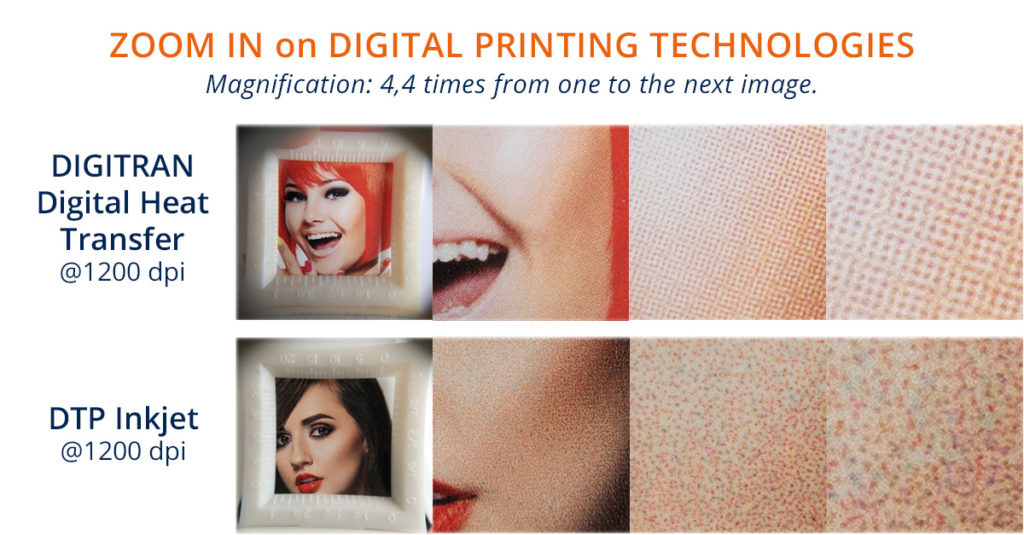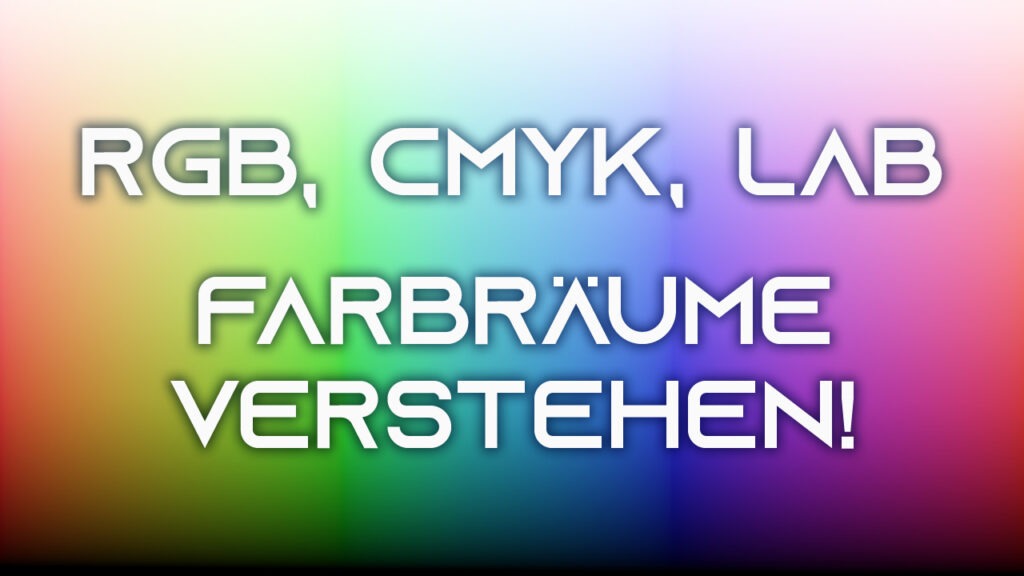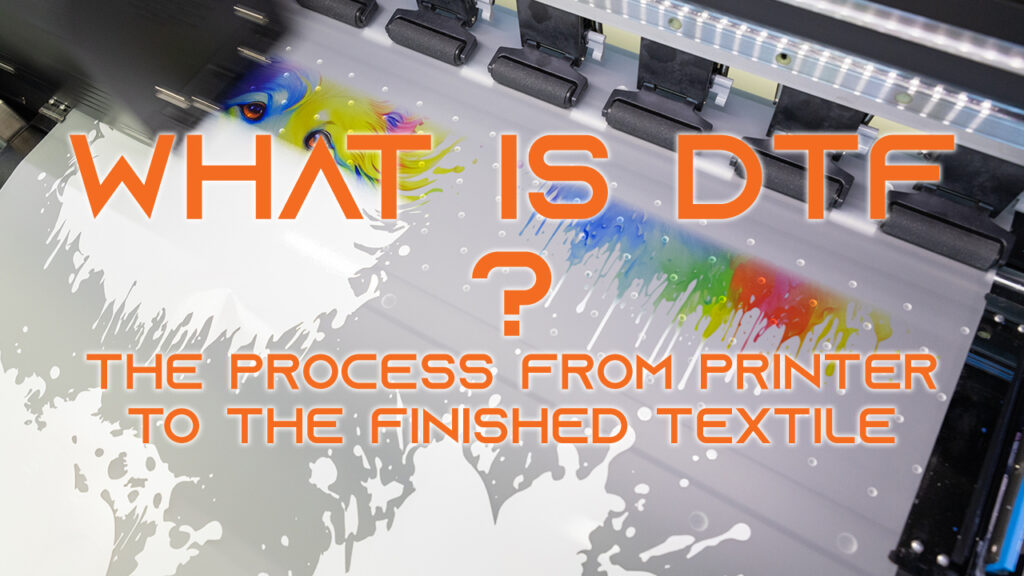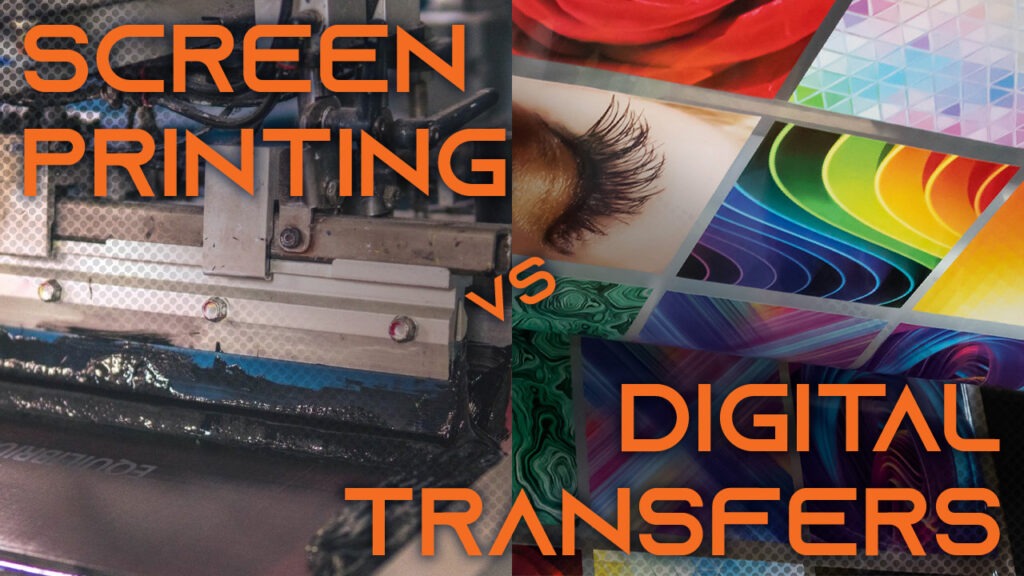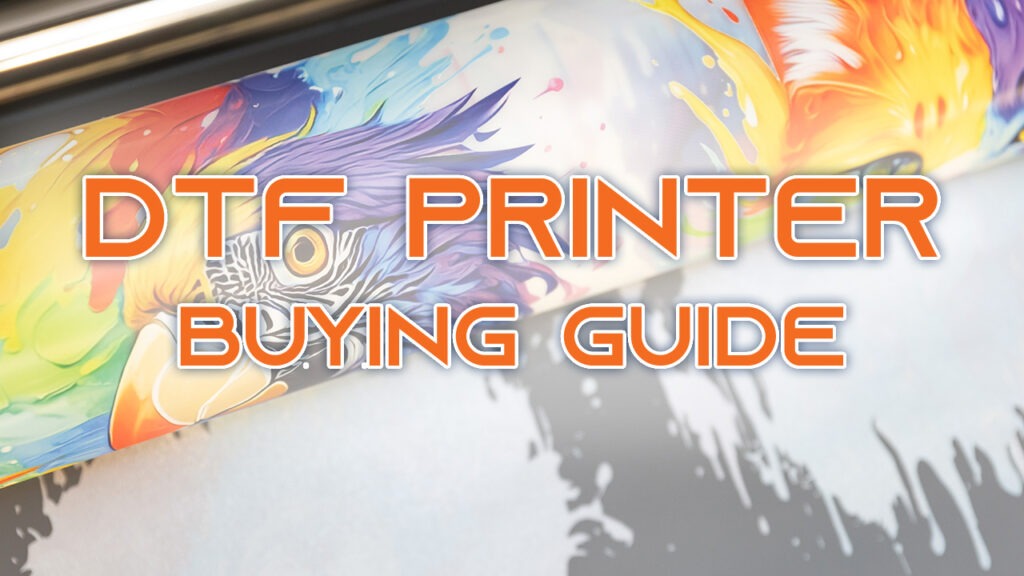Do you think that 1200dpi and 1200dpi are the same thing in digital printing? Probably yes.
But no, not even close!
Especially when it comes to printing photorealistic designs and skin tones, the best possible print quality should be sought. The only confusing thing is that both images have a print resolution of 1200 dpi, yet they are anything but identical. But where does this difference come from?
Digital Heat Transfers for Printing Shaped Products
DIGITRAN digital heat transfers for printing onto shaped products are printed under highly controlled conditions. For this reason, high-resolution heat transfer images can be printed with accurate positioning of the color dots. The toner-based printing process uses a combination of special transfer foils, high-resolution toner printing and adhesion promoters for various products and materials.
Immediately after the actual printing process, these printed images are wound up into compact rolls and sent for application. The last remaining step is the application of the finished printed image to the product.
Digital Inkjet Direct Printing
Printing with DTP (Direct to Product) inkjet technology is somewhat more difficult, as it involves the application of tiny drops of ink directly onto the product. These drops, up to 2 picoliters in size, have to fly through the air after leaving the print head, land on a moving surface, overcome electrostatic influences and not interact with the other drops. These complex requirements make it more difficult to control the color dots as precisely as with a toner transfer.
Conclusion
Even though both prints have 1200 "dots per inch", this number says nothing more than the number of printed colored dots. And not where these dots are afterwards.
Click this button to get in touch with us for a personal consultation. To make sure that your products can benefit from this unique, clean and digital printing technology as soon as possible.
Further Posts
How can sports jerseys and functional shirts be customized without compromising performance?
Customized logos, names or numbers are standard today – but there are many challenges, especially with polyester and elastic fabrics: Sensitivity to heat, color gradients and lack of stretch. In our blog, we show how modern heat transfers overcome these hurdles and what is important to ensure that design and function work together perfectly.
Understanding color spaces. CMYK, RGB or Lab are tools with which you can ensure that print and expectation match.When it comes to printing, the color space is something you should know. Because only if you are familiar with color spaces can you translate the color you see into the right print color. Especially with digital printing technology, this knowledge is worth its weight in gold.
What is DTF? We explain it!
Welcome to the fascinating world of DTF printing, where flexibility and quality come together. Dive into our detailed insight into the process – from the innovative DTF printers to the automatic powder shakers to the transfer press. Discover how this technology is redefining the boundaries of printing.
Revolutionizing product decoration: digital transfer printing versus screen printing.When it comes to printing on products, choosing the right printing technology is crucial to achieving an impressive and vibrant result. While screen printing has long been a conventional choice, digital transfer printing stands out as a revolutionary alternative, offering unrivaled quality and versatility.

